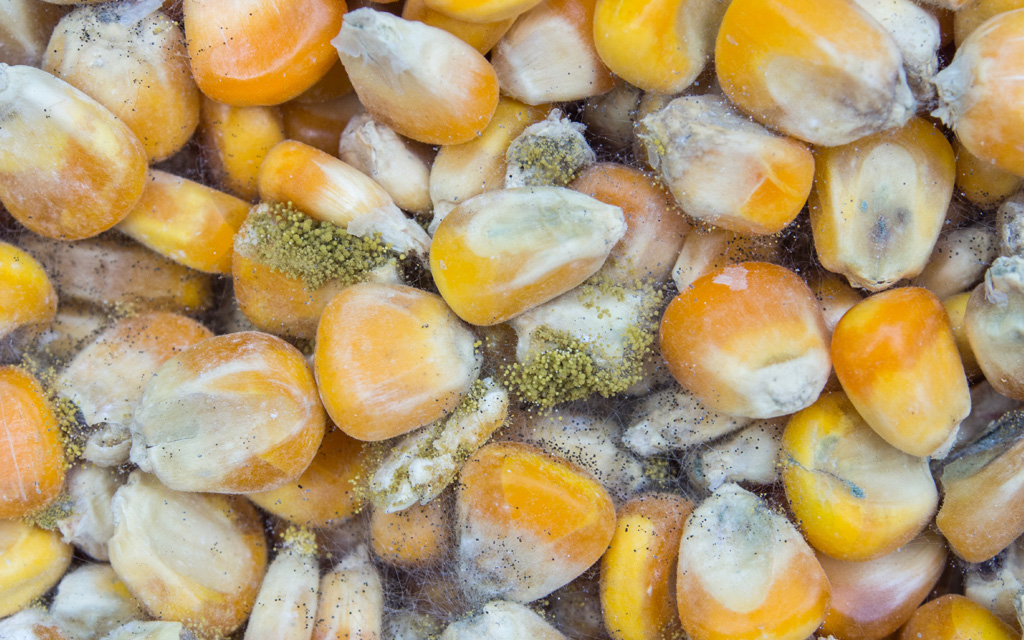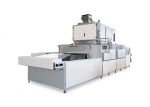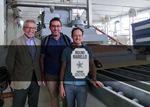
Aflatoxins are one of the most potent and dangerous groups of mycotoxins, produced by certain moulds such as Aspergillus Flavus and Aspergillus Parasiticus. These moulds grow in agricultural commodities such as tree nuts, peanuts, rice, corn, sorghum, wheat, millet, sesame seeds, sunflower seeds, cotton seeds, chili peppers etc. and in a variety of spices. Aflatoxins are produced by fungal action during production, harvest, storage and processing.
When moulds start contaminating the commodity, powdery, grey-green spores may develop on the surface of the product and aflatoxins may be produced by the fungi when the kernel moisture is around or above 15 percent. High ambient temperatures, drought stress and insect injury may contribute to increased aflatoxin contamination.
Aflatoxins have been associated with increased liver cancer in interaction with chronic hepatitis B virus (HBV) infection. They may interact also with other viral infections such as those caused by Epstein-Barr virus. In addition, aflatoxins cause Aflatoxicosis and may result in growth faltering and immune suppression in children.
The solutions in the market
The best approach to mitigate the problem of aflatoxins is prevention since, once the commodity is heavily infested by toxic fungi, there is no feasible solution to remove them. Before storage, crops should be properly dried and sanitized to prevent the development of moulds.
Chemical control has been reported to be a successful alternative to prevent fungal infestation. On the other hand, the treatment is very expensive and usually affects the sensorial properties of the product. Besides, this kind of treatment is not acceptable in organic farming, whose processes must be chemicals-free and therefore more susceptible to aflatoxin contamination.
If no treatment has been carried out during the pre-storage phase, optical screening can be used to remove the contaminated grains, yet with the consequent high product and financial losses.
The Radio Frequency (RF) technology has proven to be very effective when used for pre-storage sanitisation of agricultural commodities. It can be used simply as a moisture reduction (drying) method but also to disinfest (pest elimination) and sanitise (microbe load reduction) a large range of substrates (cereals, grains, pulses, nuts, herbs, spices, etc.). The process is 3 to 10 times faster compared to conventional treatments and, other than reducing and stabilising the moisture content of the commodity as required, is capable of ensuring 100% mortality of even the most heat resistant pest species in all their development stages or to achieve 2 to 3 log reduction of the t.b.c. within the commodity, including particularly moulds and yeasts.
Radio Frequency has proven to be far superior compared to the conventional sanitization methods for the specific purpose of preventing the formation of aflatoxins in several agricultural substrates, proving excellent results in terms of both efficiency and product quality.
![]()
More information on aflatoxins
https://www.efsa.europa.eu/en/topics/topic/aflatoxins-food



